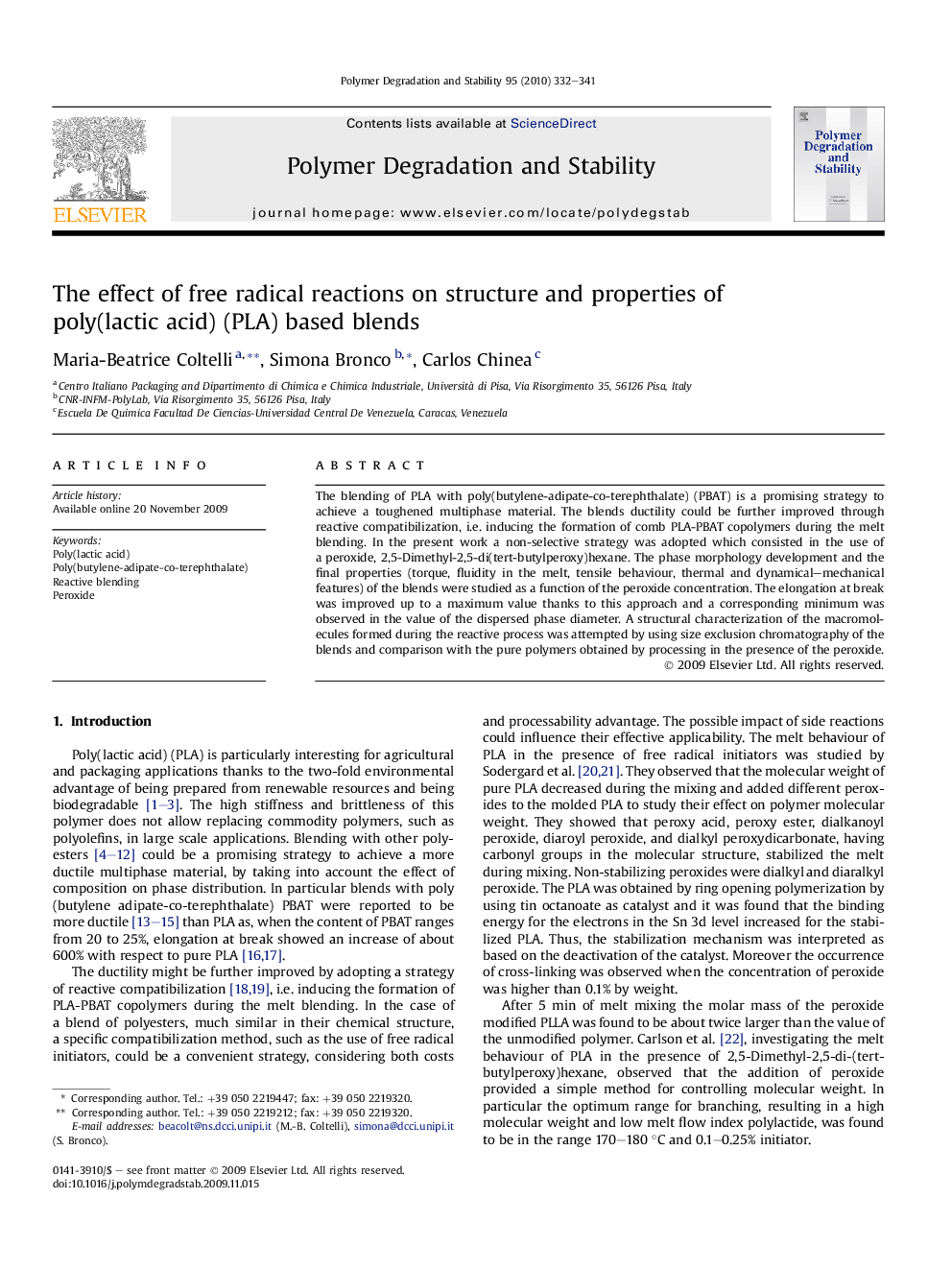| Article ID | Journal | Published Year | Pages | File Type |
|---|---|---|---|---|
| 5202840 | Polymer Degradation and Stability | 2010 | 10 Pages |
The blending of PLA with poly(butylene-adipate-co-terephthalate) (PBAT) is a promising strategy to achieve a toughened multiphase material. The blends ductility could be further improved through reactive compatibilization, i.e. inducing the formation of comb PLA-PBAT copolymers during the melt blending. In the present work a non-selective strategy was adopted which consisted in the use of a peroxide, 2,5-Dimethyl-2,5-di(tert-butylperoxy)hexane. The phase morphology development and the final properties (torque, fluidity in the melt, tensile behaviour, thermal and dynamical-mechanical features) of the blends were studied as a function of the peroxide concentration. The elongation at break was improved up to a maximum value thanks to this approach and a corresponding minimum was observed in the value of the dispersed phase diameter. A structural characterization of the macromolecules formed during the reactive process was attempted by using size exclusion chromatography of the blends and comparison with the pure polymers obtained by processing in the presence of the peroxide.
